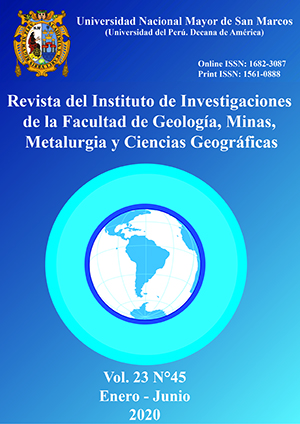Development of a statistical evaluation model, to reduce accident rates at the Uchucchacua Mine
DOI:
https://doi.org/10.15381/iigeo.v23i45.18048Keywords:
Methodology, critical risks, Pareto principle, accident rate, target audience, objective public, accident preventionAbstract
This investigation allowed to evaluate the results of risk management in a mining operation. This highlights the importance of adopting preventive measures to control the causes of accidents. To this end, a methodology is developed that allows identifying and giving maximum attention to the existing critical risks, determined from evaluating and analyzing the information provided in the Accident Investigation Reports. Thus, the predominant work characteristics are recognized in the occurrence of accidents, to systematically address them and avoid the damage they generate. This methodology uses the Pareto Principle, to find in a practical way, those few characteristics of the work that still influence the accident rate, in which we must focus our management as a priority. It also allows identifying the ‘target audience’ that is the most affected by the damage. All this properly managed information can facilitate acting preventively to control risks at work, seeking to protect staff and avoid new or repetitive events that affect them.
Downloads
Published
Issue
Section
License
Copyright (c) 2020 Carlos Enrique Rodríguez Vigo

This work is licensed under a Creative Commons Attribution-NonCommercial-ShareAlike 4.0 International License.
AUTHORS RETAIN THEIR RIGHTS:
a. Authors retain their trade mark rights and patent, and also on any process or procedure described in the article.
b. Authors retain their right to share, copy, distribute, perform and publicly communicate their article (eg, to place their article in an institutional repository or publish it in a book), with an acknowledgment of its initial publication in the Rev. Inst. investig. Fac. minas metal cienc. geogr.
c. Authors retain theirs right to make a subsequent publication of their work, to use the article or any part thereof (eg a compilation of his papers, lecture notes, thesis, or a book), always indicating the source of publication (the originator of the work, journal, volume, number and date).






